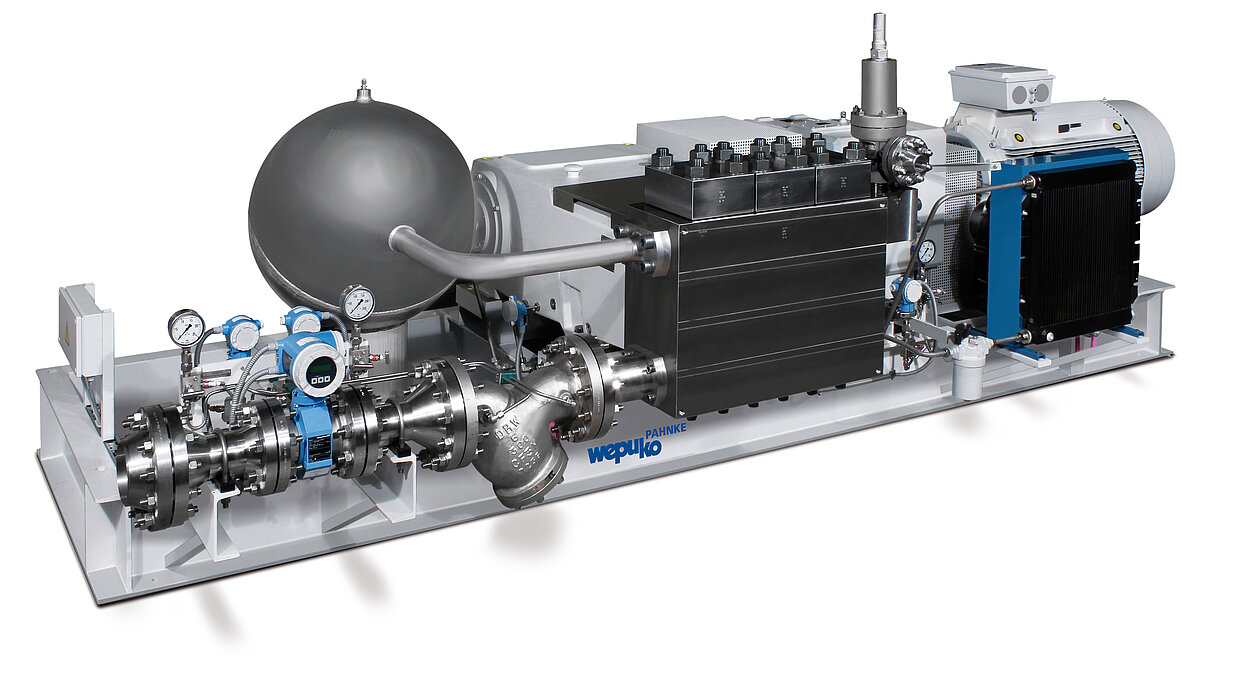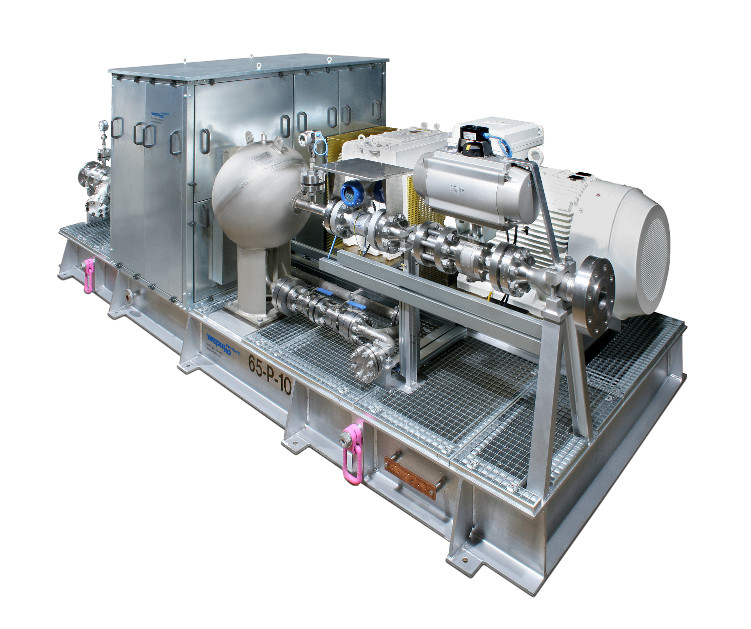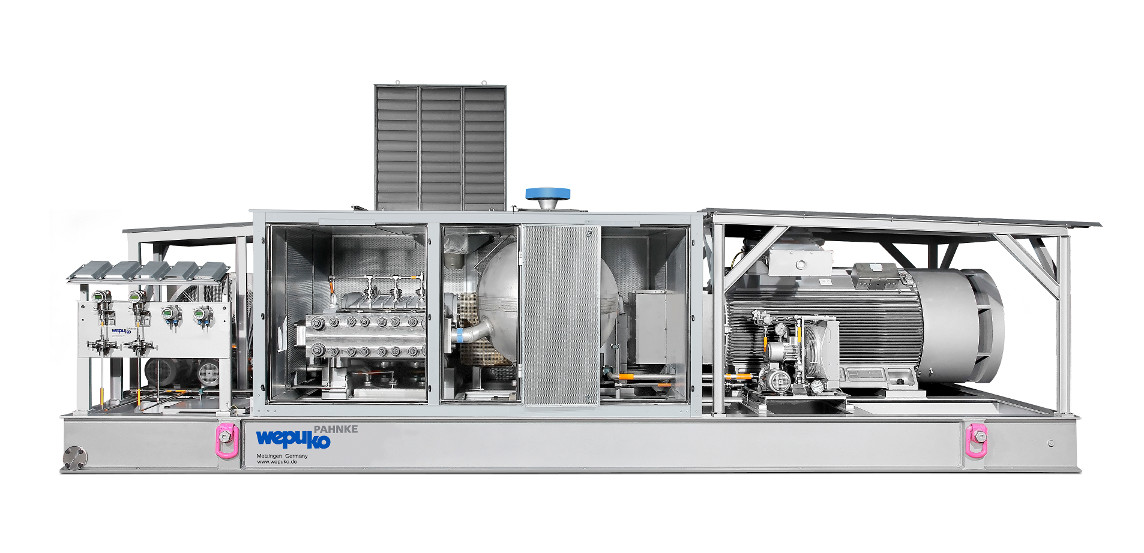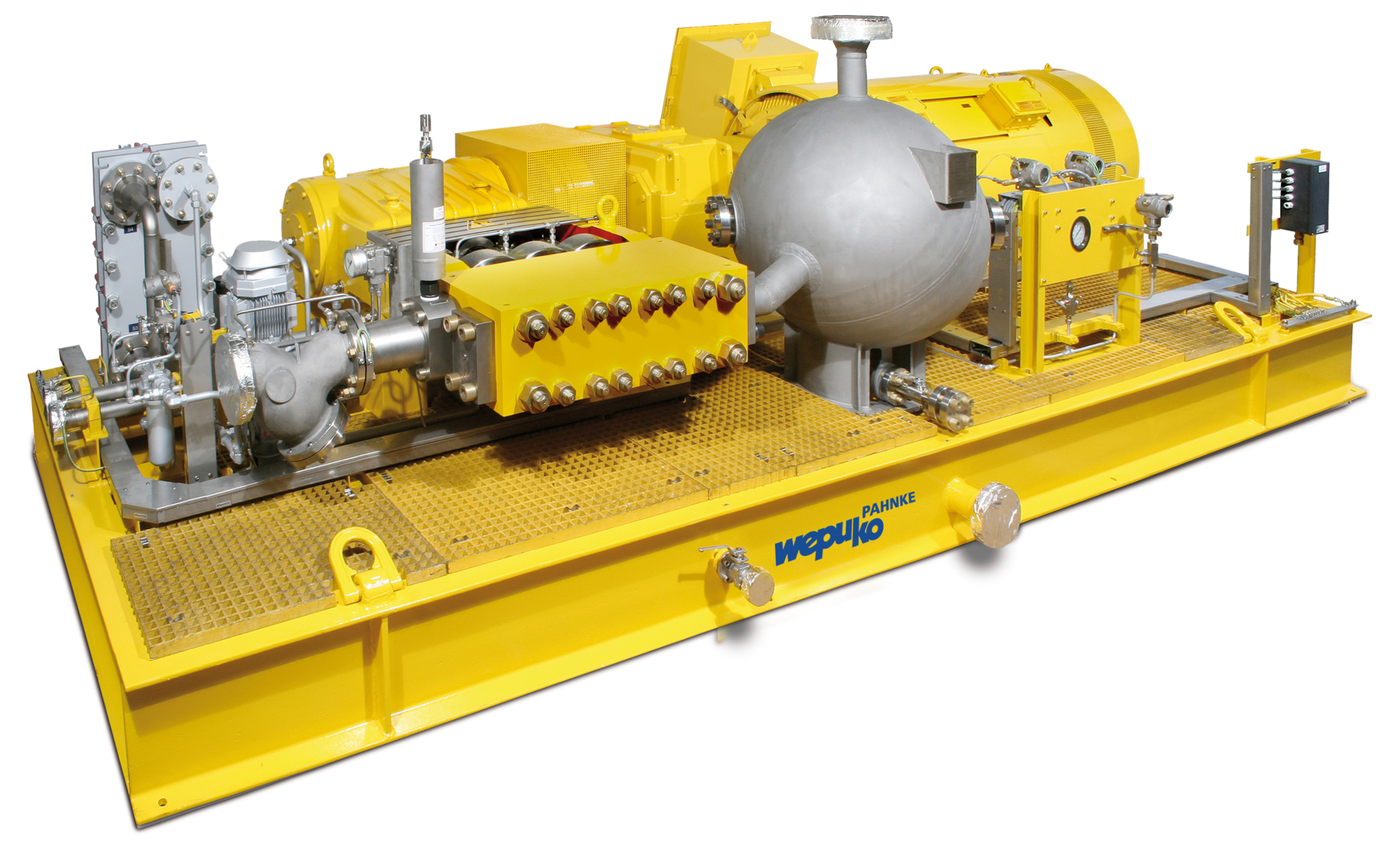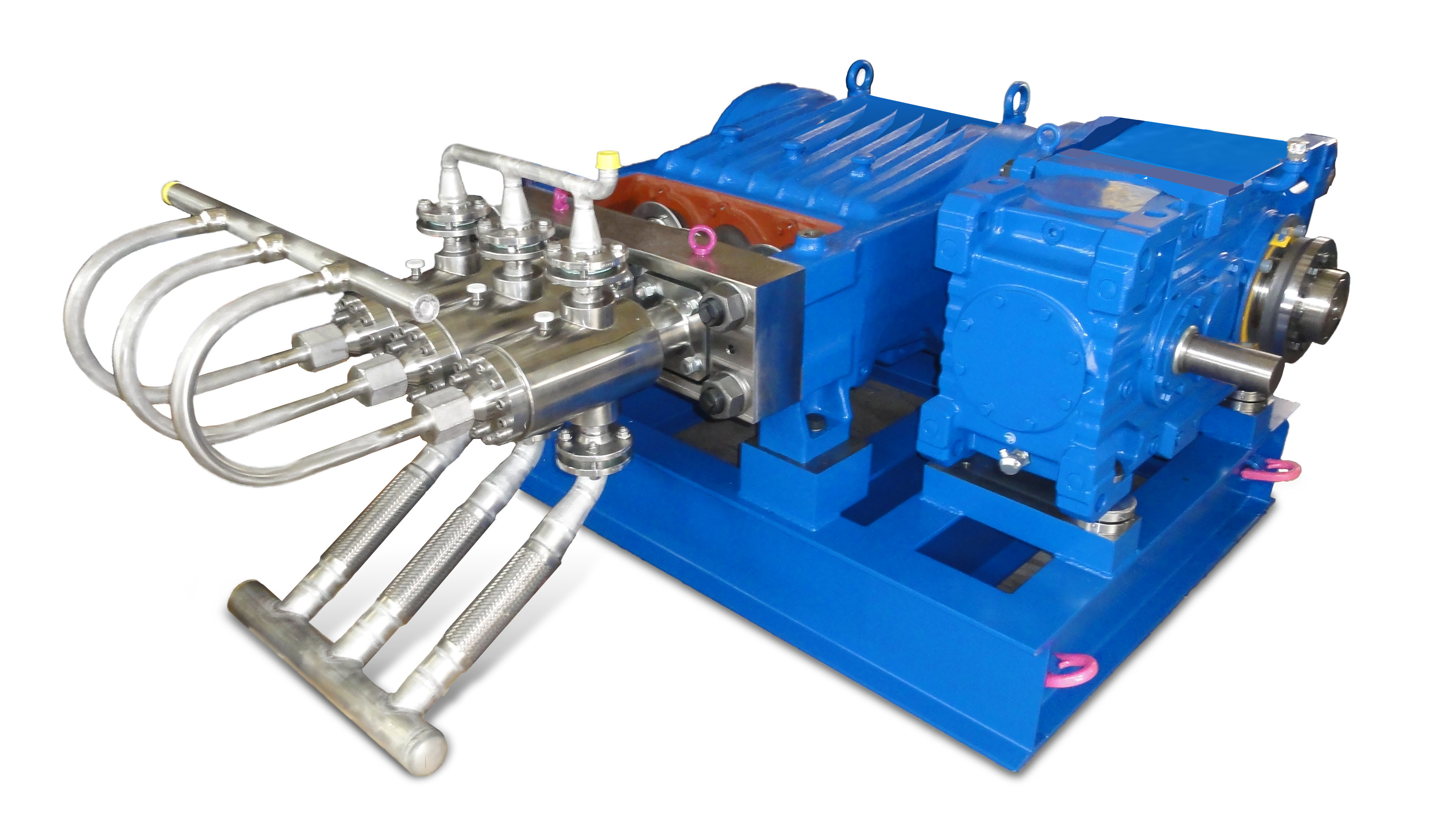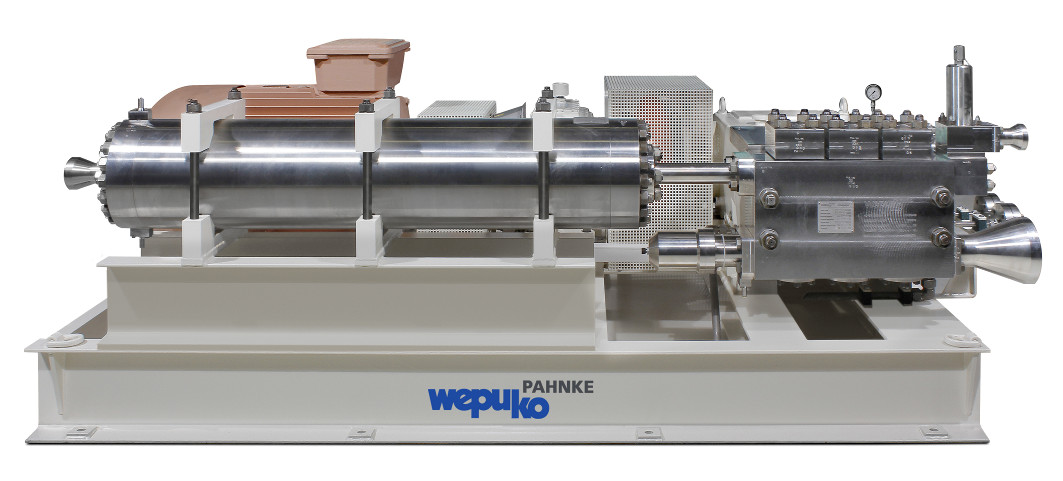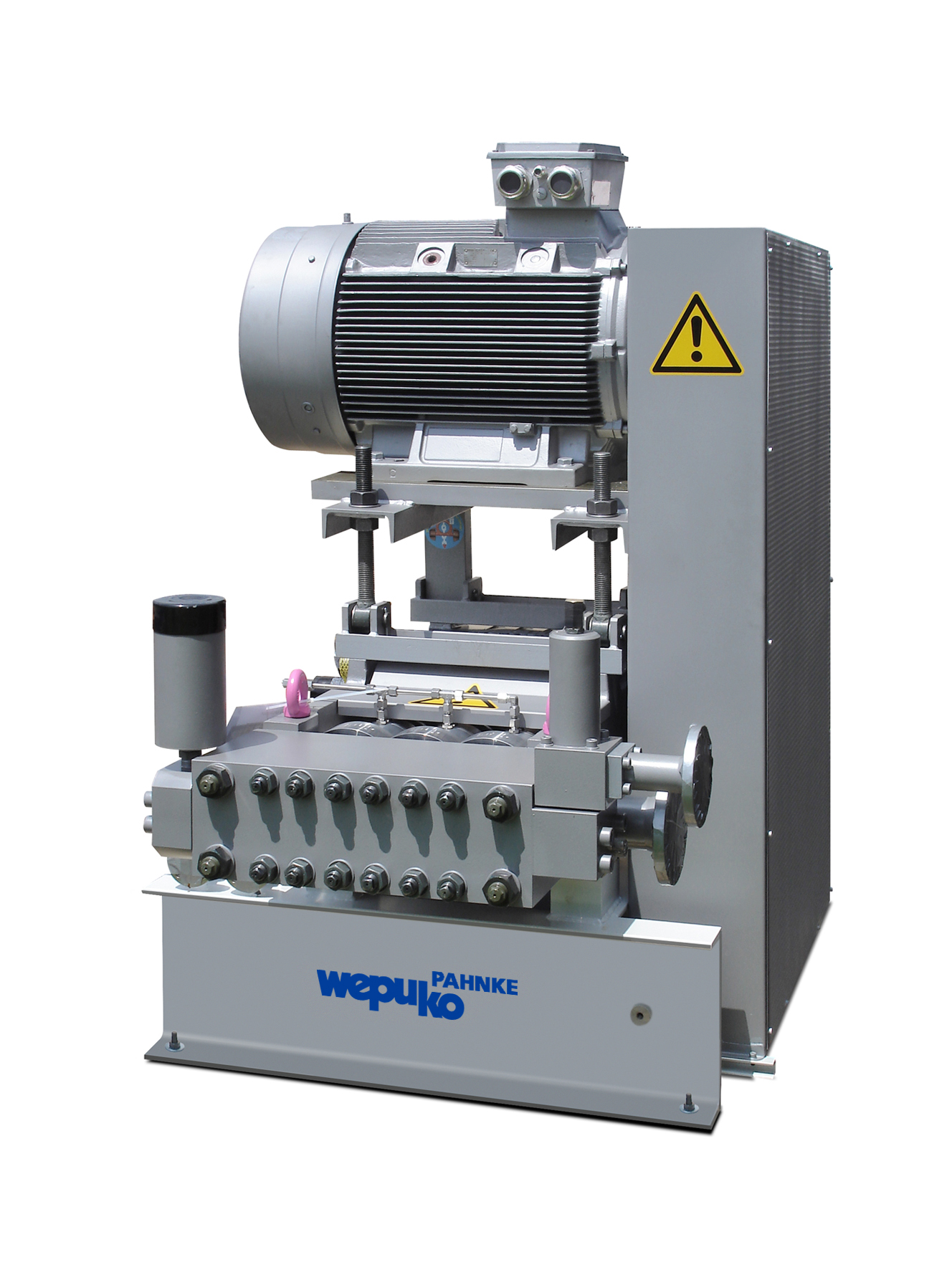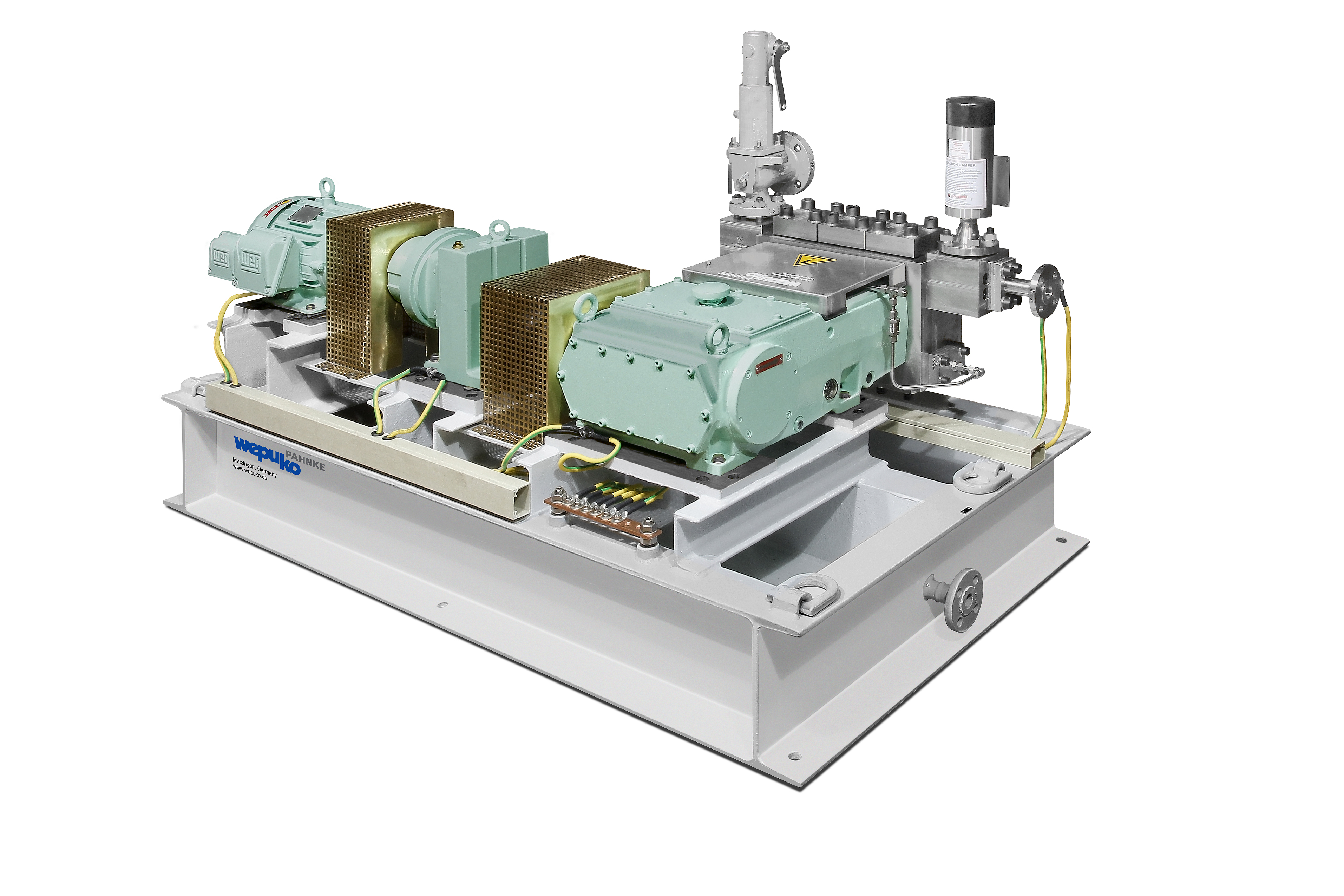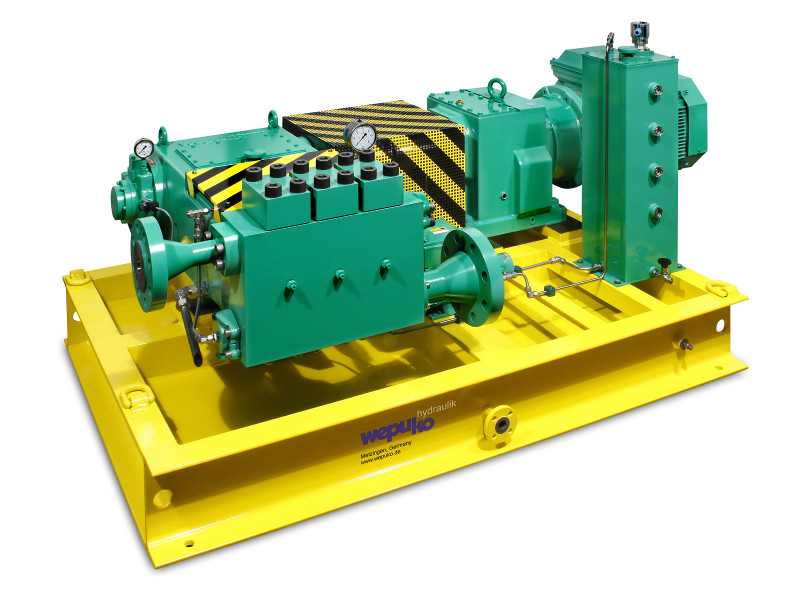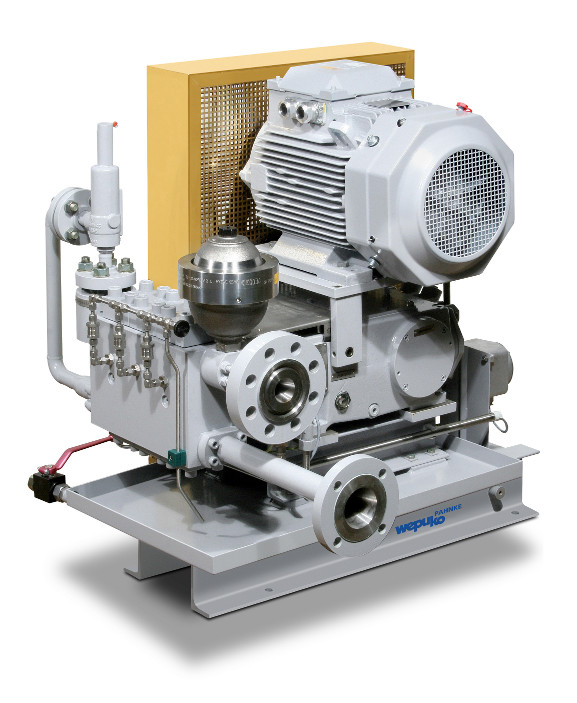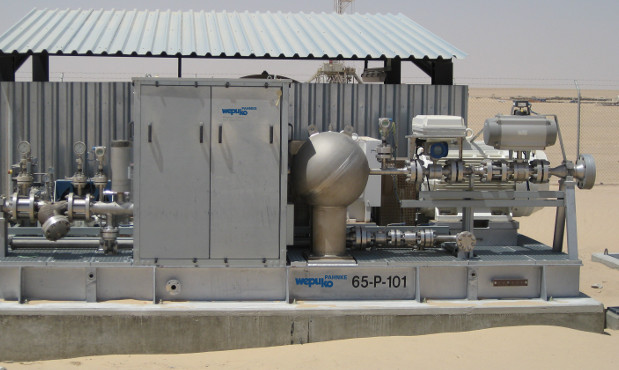
Responsibility and perspectives: Our pumps in use
Whether for fracking, for gas drying, as injection pumps or for well service: Wepuko PAHNKE pumps are in continuous operation both onshore and offshore. They guarantee smooth production flow under all kinds of conditions.
Please select an application in order to get more information:
> Well Service
> Injection pumps
> Produced water
> Fracking & Well Stimulation
> Gas dehydration
> Boric acid pumps
> Boiler feedwater pumps
> CO2 applications
> Cryotechnologie
> Further applications
Well Service (On- and Offshore)
For well service operations, pipeline pigs are pushed through the inside of pipelines and risers. This is where our pumps come in. The medium pumped for this hydraulic task is typically diesel. Pigs can be used for various purposes, where they mainly serve to clean the pipeline or to seal it off during repairs or maintenance – say when inspecting for corrosion and cracks.
Another well service application for our pumps is hydrostatic pressure testing of risers and pipelines, on platforms and FPSOs. The typical medium used in these cases is water, seawater or a water-glycol mixture.
Injection pumps (onshore and offshore)
As a precautionary measure, additives are injected into transportation conduits and pipelines. In such cases, our pumps inject methanol, ethanol or glycol in order to counteract hydrate formation and blockages.
Another application is to inject immediately before commencing the actual transportation operation; this prevents any water present in the oil or gas from freezing onto the walls of the pipeline.
Our pump units are designed to perform other functions in addition, such as hydrostatic pressure tests or hydraulic opening and closing of large valves.
Our pumps are also used for pumping hydrocarbon condensate. The fluids are directed back into the process.
Produced water
Produced water is re-injected in order to enhance and stabilize recovery from the well, or simply to dispose of the water. Extremely salty water separated from the upstream process is most often continuously pumped under high pressure into dedicated boreholes for this purpose. Again, our high-pressure plunger pumps prove their worth in this application. Constructed according to API 674 / ISO 13710, they fulfil the high standards of the petrochemical industry.
Fracking & well stimulation (onshore and offshore)
The pumps to use for fracking and well stimulation are our high-pressure plunger pumps. In these processes, they pump water and chemicals as well as acids and polymers with abrasive components into the deposit.
This fractures and stabilizes the rock formations in order to expand the deposit and thus increase and optimize the yield. The process requires pressure of up to 1000 bar and high volumetric flow rates. Our pumps have been successfully employed in these fields for many years – for example as offshore scale squeeze pumps on intervention vessels.
In well stimulation, all kinds of methods are used to increase production from an oil or gas well. This method is used primarily in the later life of a well, in order to prevent and delay a decline in production. Essentially, the permeability of the rock is increased by washing out or fracturing the formations.
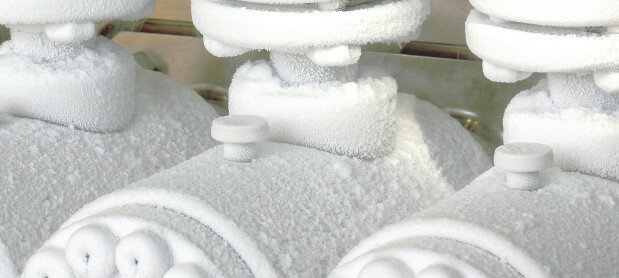
Cryotechnology

In cooperation with the temperature specialists KRYTEM, we produce high-pressure pumps for cryogenic media. The particular challenge in this field is selecting the materials for the components that will come into contact with the fluid at -196 °C in dynamic mode.
Alongside pumps for industrial process applications that require high mass flow rates of liquid nitrogen under high application pressure, we offer the HLEP series of explosion-protected units for supplying ship propulsion with high-pressure natural gas (LNG / CNG).
> You can find KRYTEM's website here
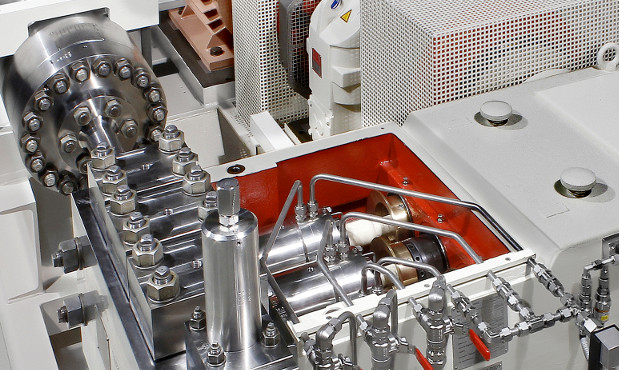
Boric acid pumps
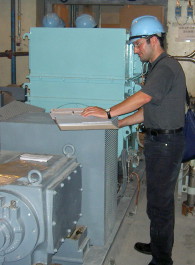
In nuclear power plants using a pressurized-water reactor, our pumps are used to inject boric acid into the reactor in emergencies.
High reliability of this equipment is essential in such an application: Should any primary safety systems fail – such as the retraction or hydraulic driving of control rods – then the pump injects a boron solution into the reactor. The boron, like the control rods, serves to absorb neutrons and thereby halt the chain reaction.
Boiler feedwater pumps
Our plunger pumps are used in conventional power plants as primary pumps or as emergency backup feedwater pumps. In relatively small-scale solar power plants, they are installed as feedwater and recirculation condensate pumps. Temperatures in these applications reach up to 270 °C – which places high demands on the material, seals and connecting elements.
Aside from the classical use as boiler water feed pumps, our pumps are used for other related applications such as enhanced oil recovery, for example. This is where various gas types are injected in order to force the oil to the surface and to minimize the viscosity of the crude oil.
CO2 Anwendungen
High-pressure pump skids for supercritical CO₂ applications
The process of high pressure extraction using fluid solvents offers wide-ranging benefits over conventional methods of separation.
It allows the gentle treatment of temperature-sensitive natural substances and selective separation by varying temperature and pressure. Fragrances and aromas are retained unchanged. The result are dry products, concentrates and substances with no trace of any solvent residue.
Increasingly significant: Supercritical carbon dioxide (CO₂)
Ever more stringent environmental requirements are making the compression of carbon dioxide an increasingly attractive option, leading to the continuous development of new applications and processes in this field. The use of carbon dioxide represents a low-cost, reliable and environmentally friendly alternative to organic solvents. Due to the high efficiency of the process and the quality of the extracts, products extracted using carbon dioxide are used predominantly by the food, cosmetic and pharmaceutical industries.
Selected references
• Pharmalink Extracts
• Novo Agritech
• Superwood
• Synthite Industries
Gas dehydration (onshore and offshore)
For gas drying, our pump units are used for transporting cold or hot glycol in a gas drying system.
The natural gas transported has a relatively high content of dissolved water and therefore lower calorific value. Dry glycol, which "rains" through the natural gas stream – like in a shower – draws out this humidity. Due to its hygroscopic property, the glycol absorbs the dissolved water. The saturated glycol is then dried by heating and reintroduced into the loop.
